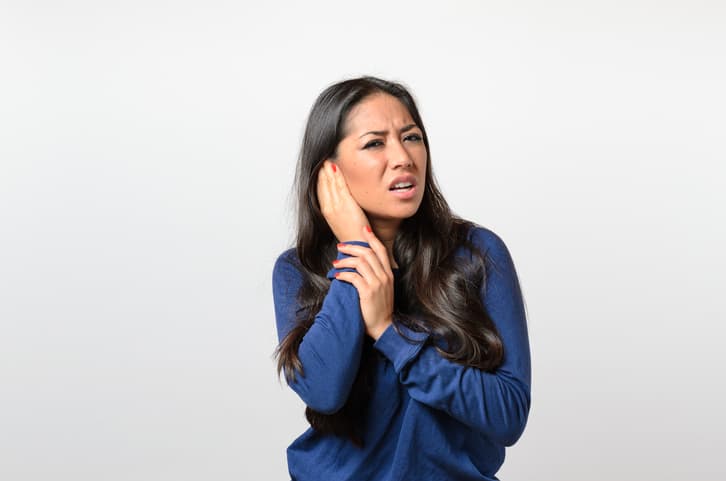
Symptoms of TMJ Arthralgia
Your temporomandibular joint works on a ball and socket system. If any part of the system is misaligned or inflamed, whether it’s your joint, muscle or ligaments in that area, the area can become painful, notes the American Dental Association. Arthralgia, or pain in any joint, can happen in any part of your body. Take your knees, for example. You’ve probably experienced soreness after heavy activity as a result of joint or muscle pain, and in more serious cases, you may not have been able to move well or put weight on the area. But because there are so many delicate muscles in your face, if you have pain in your jaw, you’re also likely to experience pain in connected areas:
- You may have tenderness, soreness or acute pain in your face.
- Earaches may be common.
- Headaches can be a symptom.
- You might experience a lack of movement in the joint.
- Clicking noise in your jaw may point to arthralgia.
Moreover, if you’ve been diagnosed with an autoimmune disease, like lupus or Lyme, or have a physical dislocation in your jaw, you may be more susceptible to TMJ arthralgia, reports the Mayo Clinic.
Finding Relief: Treatments for Arthralgia
If you’re worn down by dealing with pain in this area, make an appointment with your dentist right away to get help. Nowadays, there are numerous treatments to lessen the pain and correct the problem. According to the Cleveland Clinic, depending on the severity of your disorder, your dentist may start by prescribing non-invasive treatments. But apart from hot and cold compresses, anti-inflammatory over-the-counter medicines, massage or staying away from hard foods, there are several options — that range in invasiveness and complexity — that may relieve your discomfort:
- Corrective ware. If your bite is off, corrective ware, like braces, is one option.
- Injection therapy. Known as trigger point therapy, is a more invasive treatment where anaesthesia or a neurotoxin like Botox is injected into your facial muscles.
- Surgery. Today, arthroscopy is a less invasive option than open-jaw surgery. A small incision is made and video technology helps the surgeon guide your joint or another part of the temporomandibular system into place, or remove any inflamed tissue. Arthrocentesis is similar to arthroscopy but uses a fluid injection to drain inflamed tissue.
You might consider switching to a softer toothbrush. Though you may feel less inclined to brush an area that’s constantly sore or achy, The TMJ Association advises talking to your dentist about your daily oral care options and to schedule regular dental visits.
